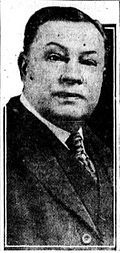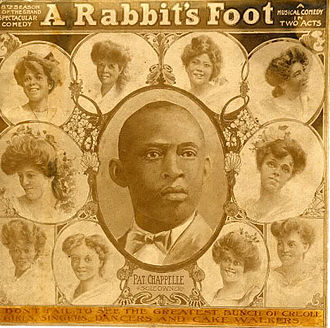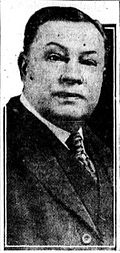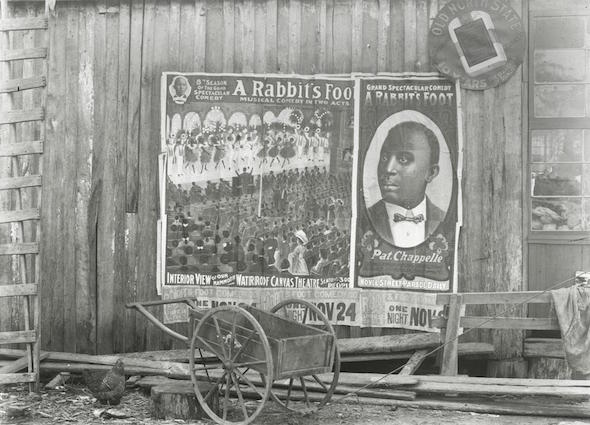

Hope you’re having a great weekend POU! Today in our last installment looking at the lives and events for African Americans during the Gilded Age (1875-1910), we take a look at one of the top entertainment shows for this era.

The Rabbit’s Foot Company, also known as the Rabbit(‘s) Foot Minstrels and colloquially as “The Foots”, was a long-running minstrel and variety troupe that toured as a tent show in the American South starting in 1900. It was established by the African-American entrepreneur Pat Chappelle and taken over after his death in 1911 by Fred Swift Wolcott. It provided a basis for the careers of many leading African-American musicians and entertainers, including Arthur “Happy” Howe, Ma Rainey, Ida Cox, Bessie Smith, Butterbeans and Susie, Tim Moore, Big Joe Williams, Louis Jordan, Brownie McGhee, and Rufus Thomas.
The company was founded, organized, originally owned and managed by Pat Chappelle (1869–1911), an African-American former string band guitar player and entrepreneur originally from Jacksonville, Florida, who established a small chain of theatres in the late 1890s. In 1898, Chappelle organized his first traveling show, the Imperial Colored Minstrels (or Famous Imperial Minstrels), which featured the comedian Arthur “Happy” Howe and toured successfully around the South. Chappelle also opened the Excelsior Hall in Jacksonville, the first black-owned theater in the South, which reportedly seated 500 people. In 1899, he closed the theater and moved to Tampa, where he and the African-American entrepreneur R. S. Donaldson opened a new vaudeville house, the Buckingham, in the Fort Brooke neighborhood, soon followed by a second theatre, the Mascotte.

Frank Dumont, writer of the original show A Rabbit’s Foot
The success of their shows at the Buckingham and Mascotte theatres led Chappelle and Donaldson to announce their intention, in early 1900, to establish a traveling vaudeville show. Chappelle commissioned Frank Dumont (1848–1919), of the Eleventh Street Theater in Philadelphia, to write a show for the new company. Dumont was an experienced writer for minstrel shows, who “wrote perhaps hundreds of skits and plays”. A Rabbit’s Foot had little plot; a newspaper at the time said that it “is an excellent vehicle for the presentation of an abundant amount of rag-time, sweet Southern melodies, witty dialogue, buck-dancing, cake walks, and numerous novelties”.

In May 1900, Chappelle and Donaldson advertised for “60 Colored Performers… Only those with reputation, male, female and juvenile of every description, Novelty Acts, Headliners, etc., for our new play ‘A Rabbit’s Foot’…. We will travel in our own train of hotel cars, and will exhibit under canvas”. In summer 1900, Chappelle decided to put the show into theatres rather than under tents, first in Paterson, New Jersey, and then in Brooklyn, New York. However, his bandmaster, Frank Clermont, left the company, his partnership with Donaldson dissolved, and business was poor. In October 1901, the company launched its second season, with a roster of performers again led by the comedian Arthur “Happy” Howe, and toured in Alabama, Mississippi, Georgia and Florida. The show grew in popularity throughout the early years of the century, playing in both theatres and tents. Trading as Chappelle Bros., Pat Chappelle and his brothers, James E. Chappelle and Lewis W. Chappelle, rapidly organised a small vaudeville circuit, including theatre venues in Savannah, Georgia, Jacksonville and Tampa. By 1902 it was said that the Chappelle brothers had full control of the African-American vaudeville business in that part of the country, “able to give from 12 to 14 weeks [of employment] to at least 75 performers and musicians” each season.
Chappelle stated, late in 1902, that he had “accomplished what no other Negro has done – he has successfully run a Negro show without the help of a single white man.” As his business grew, he was able to own and manage multiple tent shows, and the Rabbit’s Foot Company traveled to as many as sixteen states in a season. Chappelle was known for creating exciting shows, often coordinated with parades, or parades were organized around his show’s appearances, and the Rabbit’s Foot Company drew large crowds. The shows included minstrel performances, dancers, circus acts including “daring aerialists”, comedy, musical ensembles, drama and classic opera. The show was known as one of the few “authentic negro” vaudeville shows around. It traveled most successfully in the southeast and southwest, and also to Manhattan and Coney Island. Chappelle also established an all-black baseball team, which toured with the company and played the local team in each city the company visited. The team operated until at least 1916.

By 1904 the Rabbit’s Foot show featured more than 60 quality performers, had expanded to fill three Pullman railroad carriages, and was describing itself as “the leading Negro show in America”. For the 1904–1905 season, the company included week-long stands in Washington, D.C., and Baltimore, Maryland. Two of its most popular performers were the singing comedian Charles “Cuba” Santana and the trombonist Amos Gilliard, though the latter defected to Rusco and Holland’s Georgia Minstrels and claimed that Pat Chappelle and his brothers had threatened him at gunpoint before throwing him off the company train. Another performer, William Rainey, brought his young bride, Gertrude – later known as Ma Rainey – to join the company in 1906. That year, Chappelle launched a second travelling tent company, the Funny Folks Comedy Company, with performers alternating between the two companies. The business continued to expand, though, following a dispute, Lewis and James Chappelle left the company around 1907, and in August 1908 one of the Pullman carriages used by the show burned to the ground in Shelby, North Carolina, while several of the vaudeville entertainers were asleep. The fire occurred when one of their horses kicked over a tank of gasoline near a cooking stove. Chappelle quickly ordered a new carriage and eighty-foot round tent so the show could go on the following week.
Pat Chappelle died from an unspecified illness in October 1911, aged 42. At his death, he was said to be “one of the wealthiest colored citizens of Jacksonville, Fla., owning much real estate”. His widow, Rosa, remarried and sold the Rabbit’s Foot Company as a going concern to a white farmer, Fred Smith (F.S.) Wilcott in 1912.
